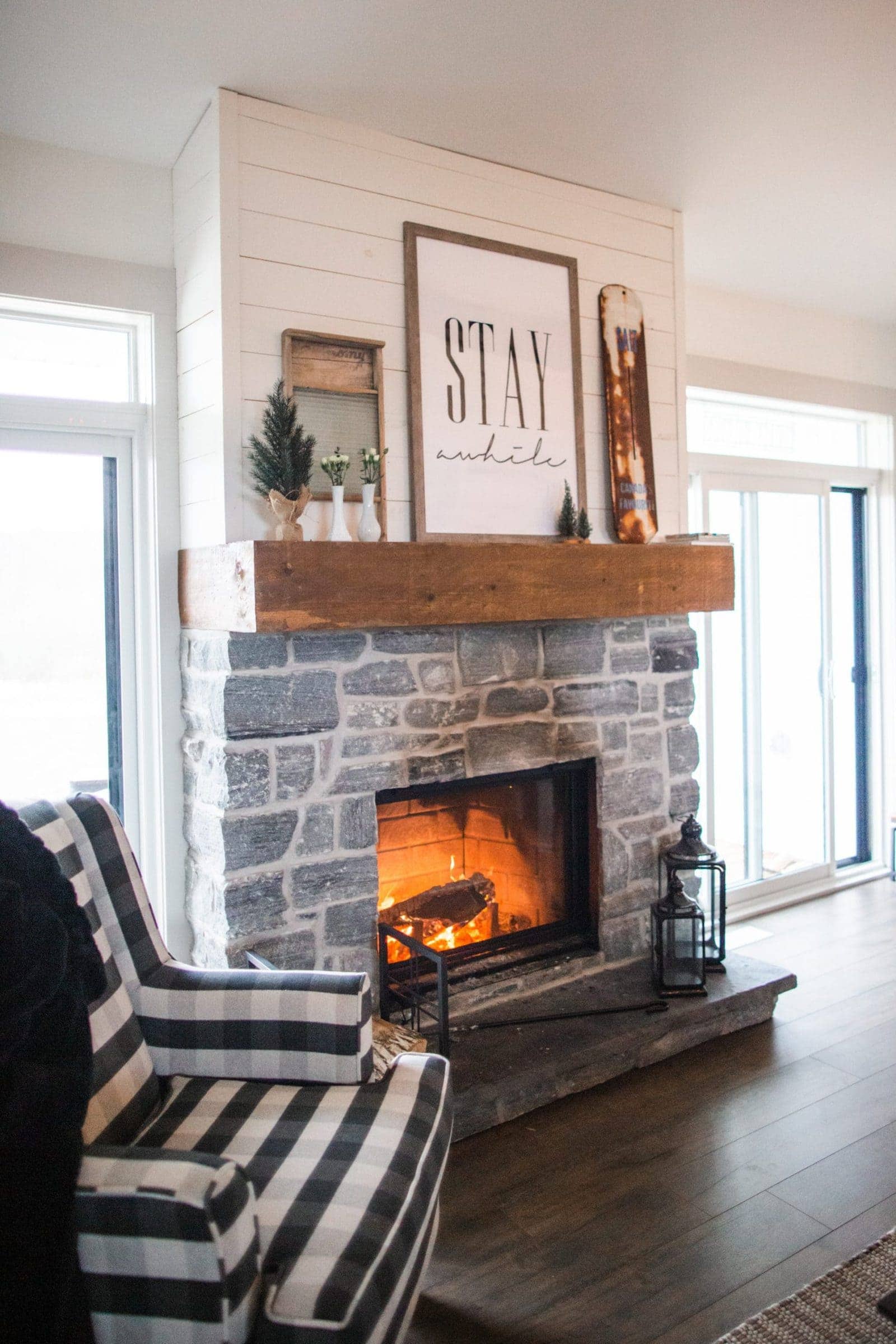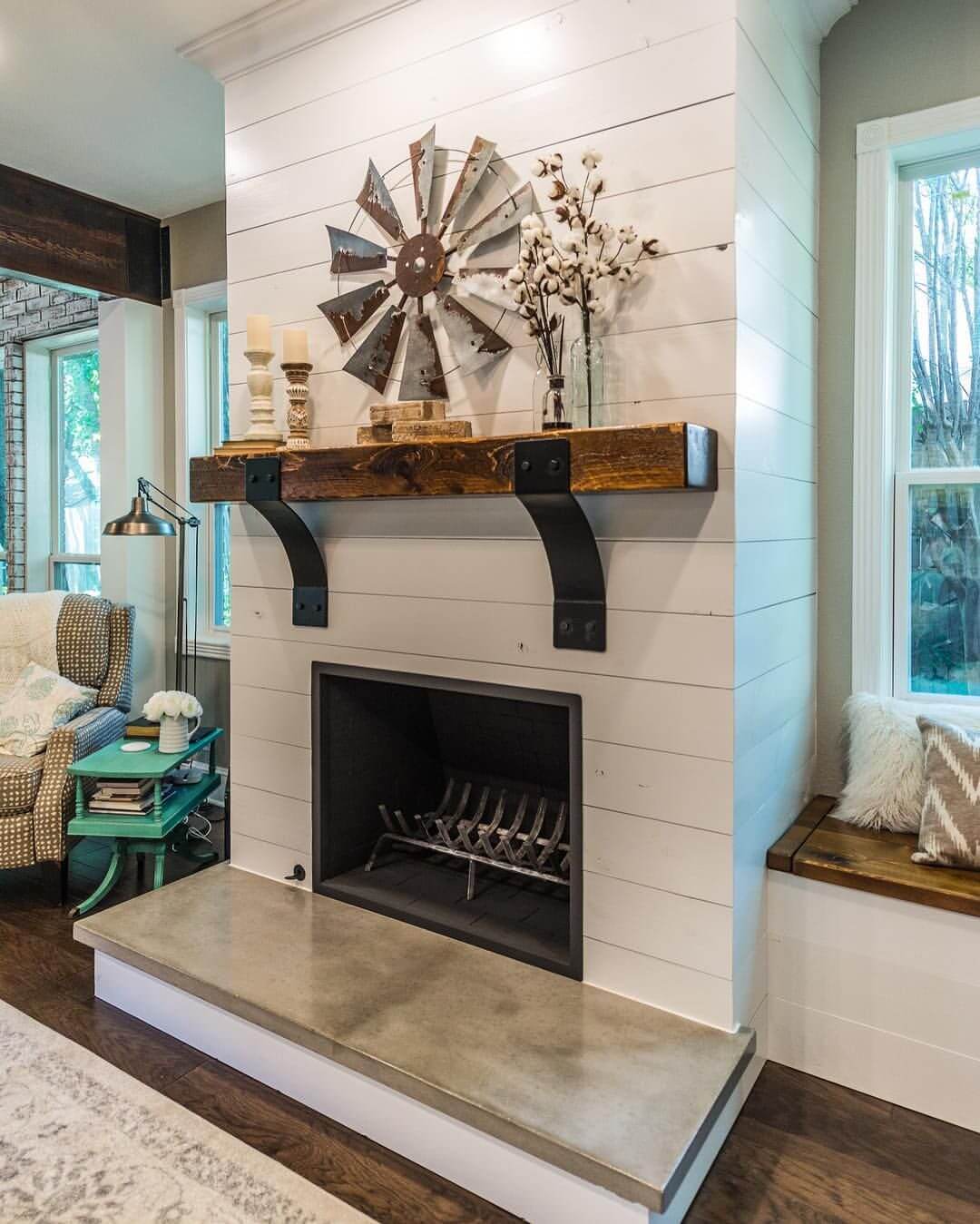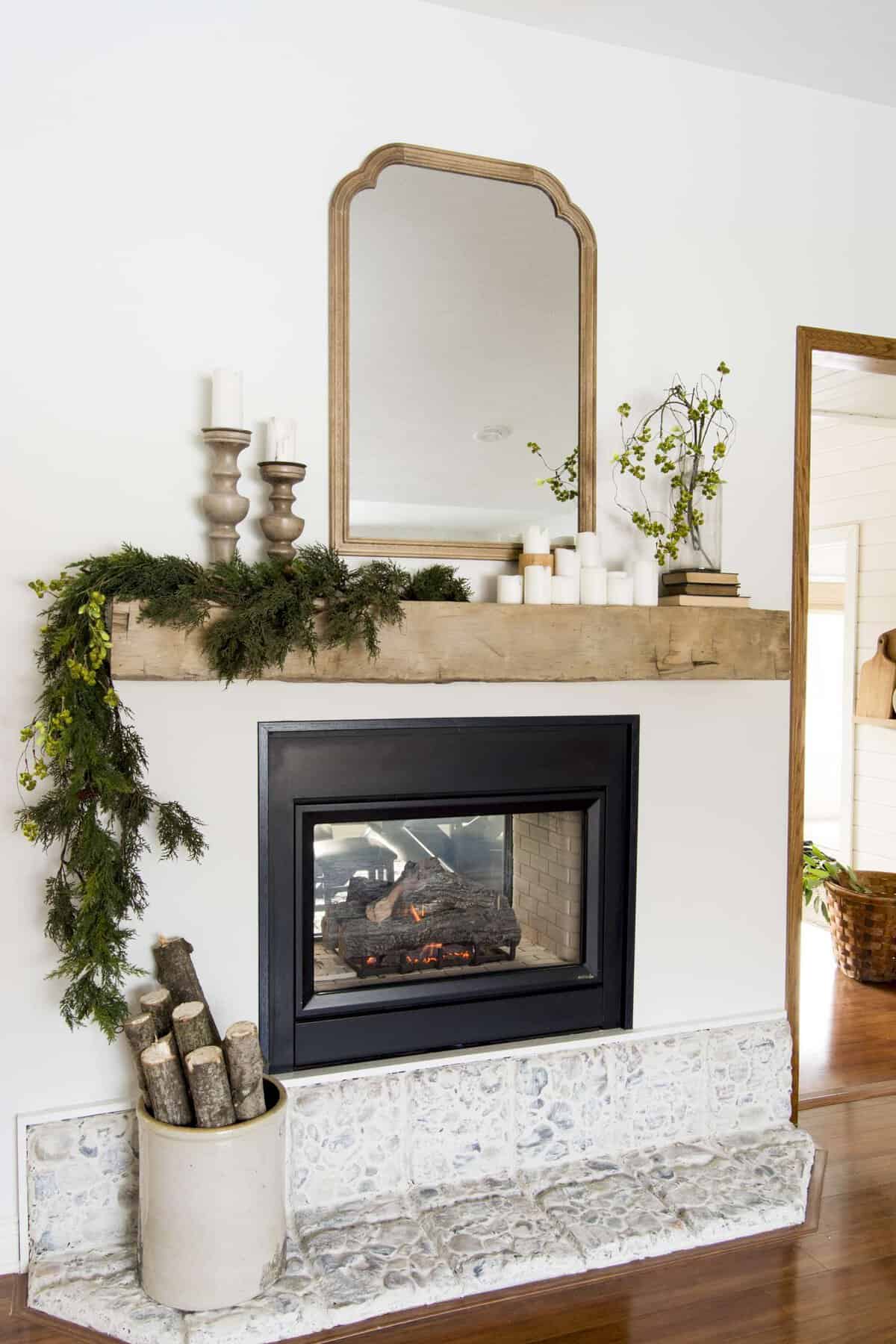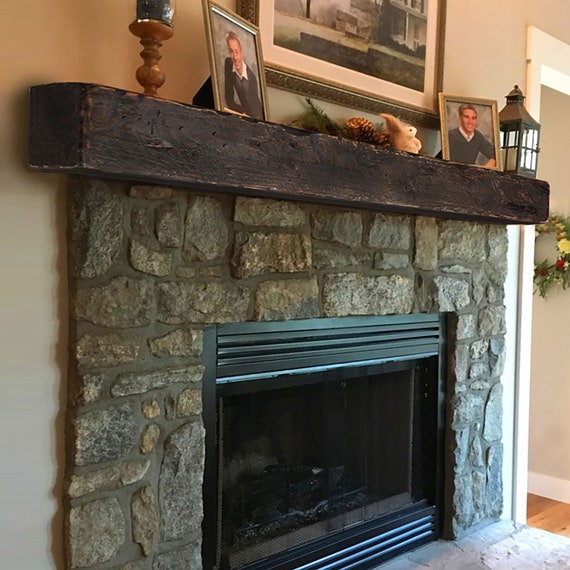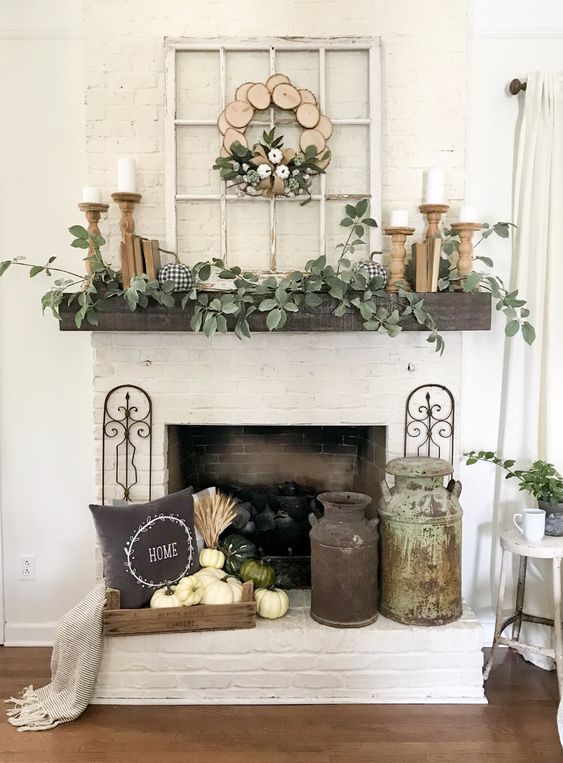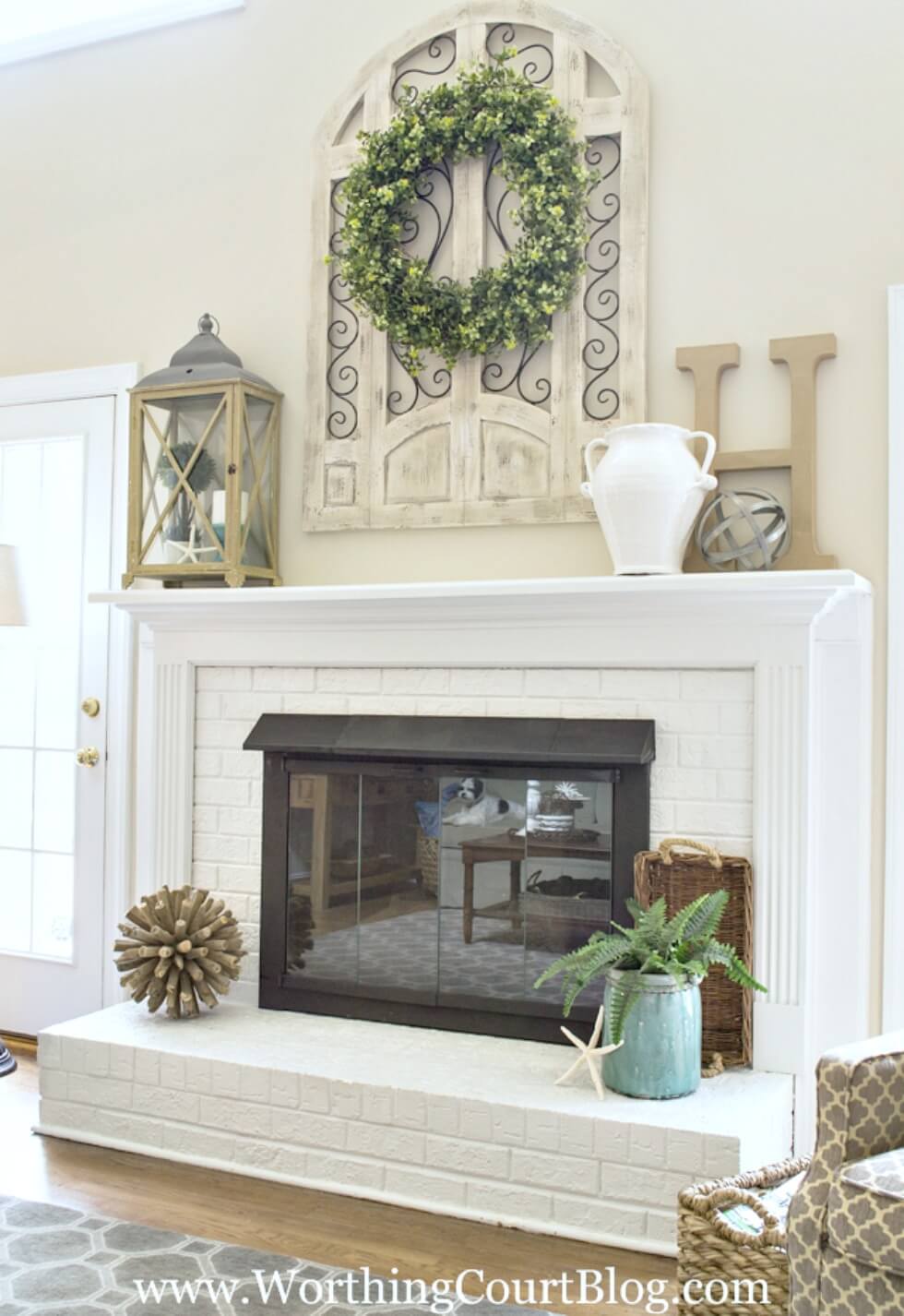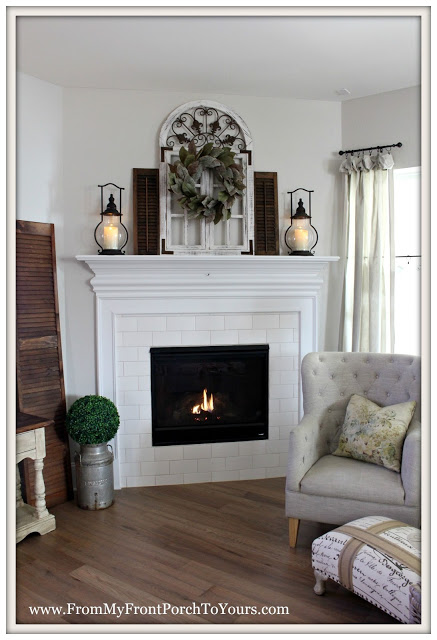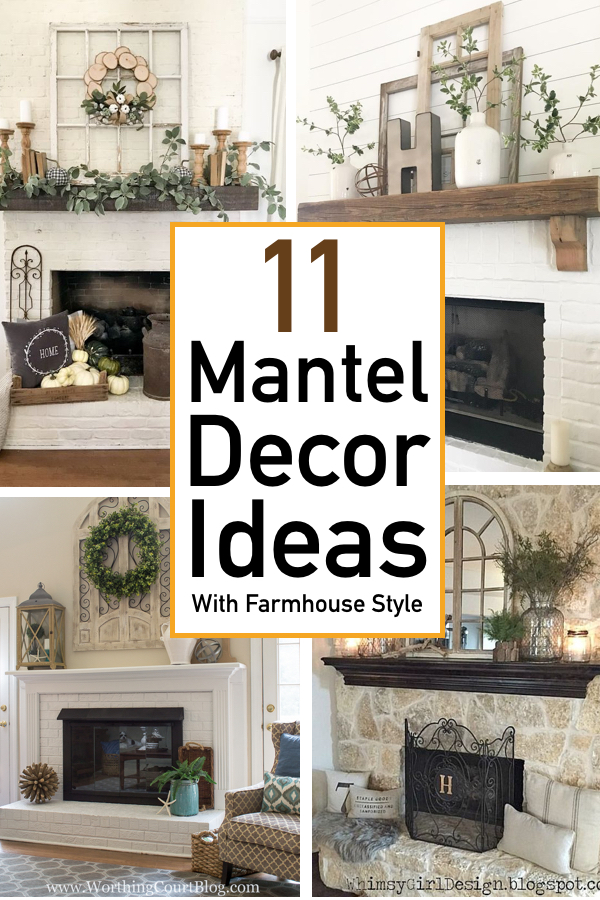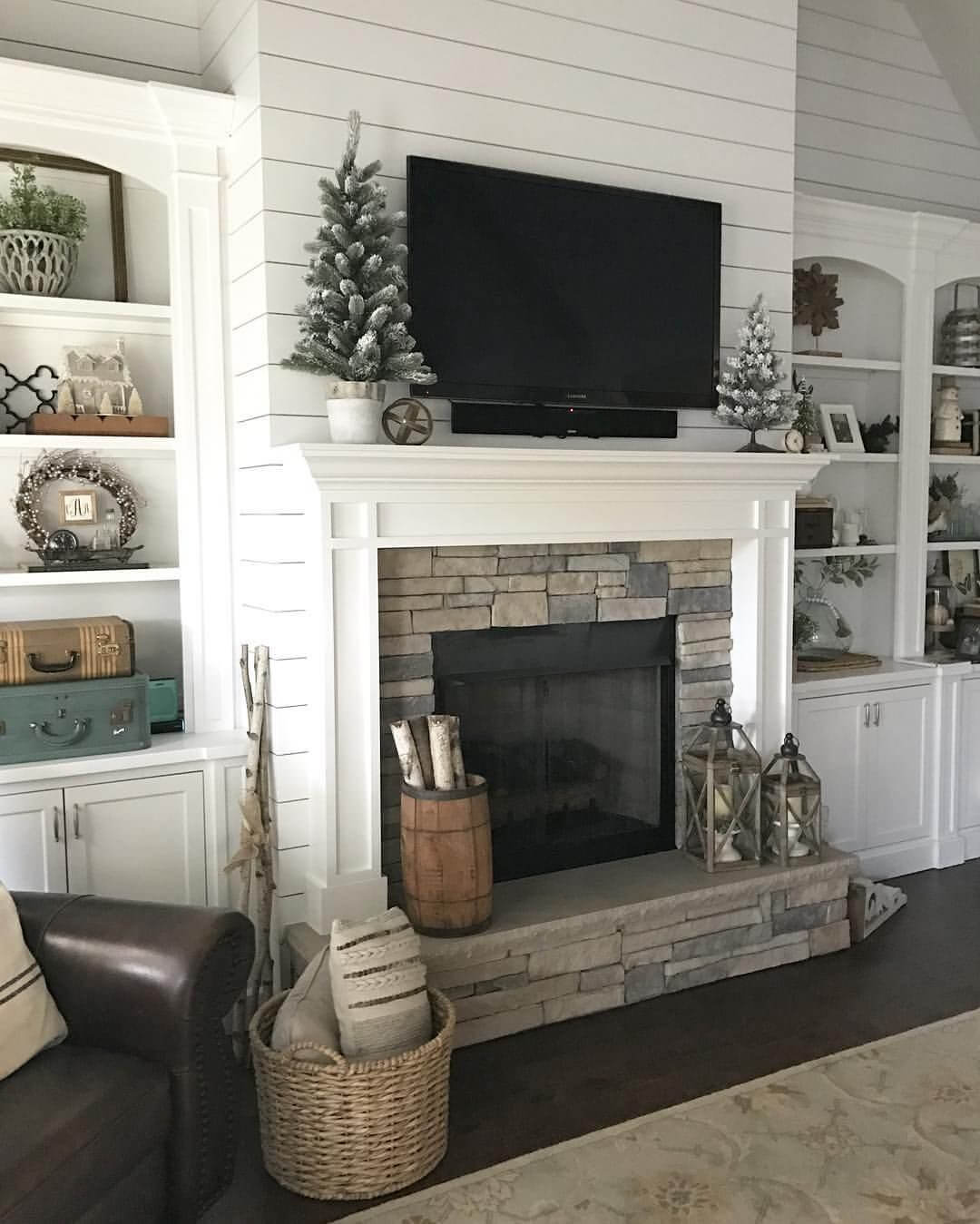A cottage fireplace. The mantel does more than just add structure to the fireplace. It conveys a story. When I think of warm rooms, I envision a rustic wood beam above a burning fire, possibly with a stack of old books or a few pieces of pottery on top. The fireplace is frequently the focal point of a cottage-style home. A well-chosen mantel enhances its individuality and warmth. Whether you’re building a new fireplace or redesigning an old one, the mantel you choose or create sets the tone for the entire area.
Selecting the Suitable Material for a Cottage Mantel
When I look at cottage fireplace mantels, the material always catches my eye first. Wood is the most traditional material, particularly salvaged wood or hand-hewn beams. These add texture and a sense of age, which complements the lived-in feel that a cottage interior frequently possesses. I’ve used driftwood in beach cottages and rough oak in country cabins, and both add a simple, honest charm that works well in a casual setting.
Stone can also look great if you want a more solid or built-in look. I’ve utilized limestone mantels with soft, chalky finishes that go well with a stone or whitewashed brick surround. While less prevalent in small homes, carved stone mantels provide a sense of permanency. They function especially well in centrally located and regularly used fireplaces since they withstand heat and wear well.
Metal is a less common but intriguing option. Wrought iron brackets beneath a basic wooden shelf can provide a utilitarian, cottage-industrial aesthetic. I once installed a copper-faced mantel in a refurbished lake house, and the patina that developed over time gave it character. You don’t have to go all metal with your mantel; a few subtle elements can make it stand out in an understated way.
Decorating the Mantel with a Cozy Cottage Feel
For me, styling a cottage mantel is about telling a narrative rather than showing off. I usually begin with one or two main points, such as an old mirror or a vintage clock, and then stack smaller items around them. I prefer to incorporate pieces that feel acquired rather than purchased as a bundle. That is what gives a cottage the feel of a well-loved home.
Seasonal additions look especially good on cottage mantels. In the fall, I might include dried flowers and miniature pumpkins. In the winter, evergreen sprigs and candles provide a calm sensation of warmth. I’ve even utilized basic stuff like pinecones or seashells, depending on where the cottage is. The idea is to avoid clutter. I strive for balance in texture, color, and height, not perfection.
Art and framed photos bring a personal touch to the environment. I frequently prefer items with muted tones or natural topics, such as landscapes, drawings, and botanical prints. I’ve also propped an empty antique frame on the chimney once, and it added a rustic touch without much work. In my view, the best mantel displays appear to have grown there, rather than being set all at once.

Integrating the Mantel and the Fireplace Surround
The mantel should not seem like an afterthought. It should look like it fits in with the rest of the fireplace. I constantly strive to match the tone of the surroundings. If I’m working with stone or brick, I’ll either stain the wood to match the earthy tones or use a neutral color like white. The smoother the blend, the more complete everything feels.
When I tile the fireplace surround, I pay close attention to the pattern and finish. For a more delicate cottage style, I may opt for hand-painted tiles or soft pastel pottery. I’ve also had success mixing white beadboard surrounds with warm wood mantels. The combination of textures gives the entire setting a fresh but homey appearance.
In cases when the fireplace features a more modern insert or stove, I try to soften it with a rougher or older-looking mantel. This contrast prevents items from feeling too new or chilly. I once coupled a sleek black firebox with a reclaimed barn beam, and it became the focal point of the living area. It’s all about striking a balance between casual and thoughtful.
DIY vs. Custom Built Mantels
I’ve made several mantels myself, and the experience is always satisfying. If you have basic carpentry abilities and the correct tools, you may make something truly unique. A basic box beam built of salvaged planks can be readily mounted using a cleat system. I enjoy how this method allows me to size the mantel precisely how I want it based on the room’s scale and the width of the fireplace.
Custom-built mantels, on the other hand, are ideal for intricate designs or fitting into a unique area. I’ve worked with local woodworkers who can match the stain on the mantel to neighboring floors or make carved edges that complement the rest of the house’s decor. When precision is required or the design is more complex, I believe it is worth the additional cost for the finished look and long-term durability.
Even semi-custom solutions can be effective. I once ordered a simple mantel online and customized the trim and finish to match the cottage’s aesthetic. That midway area allowed me to exercise creative power without having to start from scratch. Whether you build it yourself or have it made, the most important thing is that the mantel complements your room and feels intentional.
Choosing the Proper Size and Position
Getting the correct quantities is critical. An overly huge mantel might overpower a little cottage room. I normally recommend keeping the depth between 6 and 9 inches and adjusting the length to match the firebox and hearth below. A decent rule of thumb I use is to make the mantel about an inch broader on each side than the fireplace opening. This usually results in a comfortable visual balance.
Height also counts. If the mantel is too high, it seems separated from the fireplace. If you set it too low, you won’t have enough room for styling or artwork. Typically, I put the mantel top 54 to 60 inches above the floor. This provides space for exhibition while keeping the mantel at eye level in a warm environment. In little cottages with low ceilings, I adjust accordingly.
Architectural factors such as ceiling beams or built-in bookcases might have an impact on where the mantel should be located. I’ve had to modify my design to fit windows or molding, which is where flexibility comes in handy. The idea is to make everything feel natural. I frequently sketch it out or use painter’s tape to visualize the scale before proceeding with the installation.
Mantels That Tell Stories
My favorite cottage mantels are those with a tale. Perhaps it’s an ancient barn beam from a family farm or wood rescued from a historical property. These pieces have a certain soul. I usually aim to incorporate at least one meaningful aspect, whether it’s the wood itself or a souvenir placed on top of it. It contributes to the fireplace’s sense of place in the home.
Even if you’re starting from scratch, you may make history with how you finish and style the mantel. I distressed new wood to give it an old appearance or added layers of milk paint for a more realistic cottage feel. Sometimes it’s more about the attention to detail in the design than the material. When it represents your preferences and stories, it becomes more than just a shelf.
Some of the most memorable mantels I’ve seen revolved around a single concept. One was designed to match an heirloom rocking chair. Another was inspired by driftwood discovered at a beloved beach. That is the beauty of a cottage mantel; it is more than just functional. It can be a peaceful space that holds memories and serves as a stable focal point for your home.
May I use a recovered beam as a mantel?
Yes, I have done it several times. Reclaimed beams provide texture and charm. Just be sure to clean and treat the wood to remove pests and previous finishes. You may need to sand it down a little, but irregularities typically add to the appeal.
What is the ideal finish for a cottage-style mantel?
I normally use natural finishes, such as transparent wax or matte polyurethane, to highlight the wood grain. For painted mantels, I choose soft, understated colors such as cream, pastel blue, or warm white that complement the space’s comfortable vibe.
How can I safely attach a hefty wood mantel?
I usually install a French cleat system or heavy-duty lag bolts into the studs. A hollow box beam may readily conceal the hardware. Make sure it’s securely fixed, especially if you intend to add ornaments or hang stockings from it.
Can I install a mantle above a stone fireplace?
Yes, but it can be difficult. I did it by drilling through the mortar joints rather than the stone itself. Use masonry anchors to ensure the mantel is level and stable. Sometimes adding wood backing aids in secure installation.
How much wider should the mantel be than the fireplace?
I try to keep it 2 to 6 inches broader than the firebox on all sides. This gives it prominence without overwhelming the fireplace. In small cottages, going too wide can make the wall appear tight, so I keep it proportional to the room size.
Do I need to provide a clearance above the fireplace opening?
Absolutely. Mantels should be at least 12 inches above the firebox opening for safety and to prevent heat damage. I generally double-check the manufacturer’s instructions or local construction codes to be certain. It’s best to be on the safe side.
Mantel Decor Ideas With Farmhouse Style – The Unlikely Hostess
Best Farmhouse Mantel Decor Ideas and Designs
Rustic Fireplace Mantel Shelf Wooden Beam Distressed Handmade Floating Farmhouse
From My Front Porch To Yours: Farmhouse Fireplace Mantel Makeover
Mantel Decor Ideas With Farmhouse Style – The Unlikely Hostess
Best Farmhouse Mantel Decor Ideas and Designs
Related Posts:
